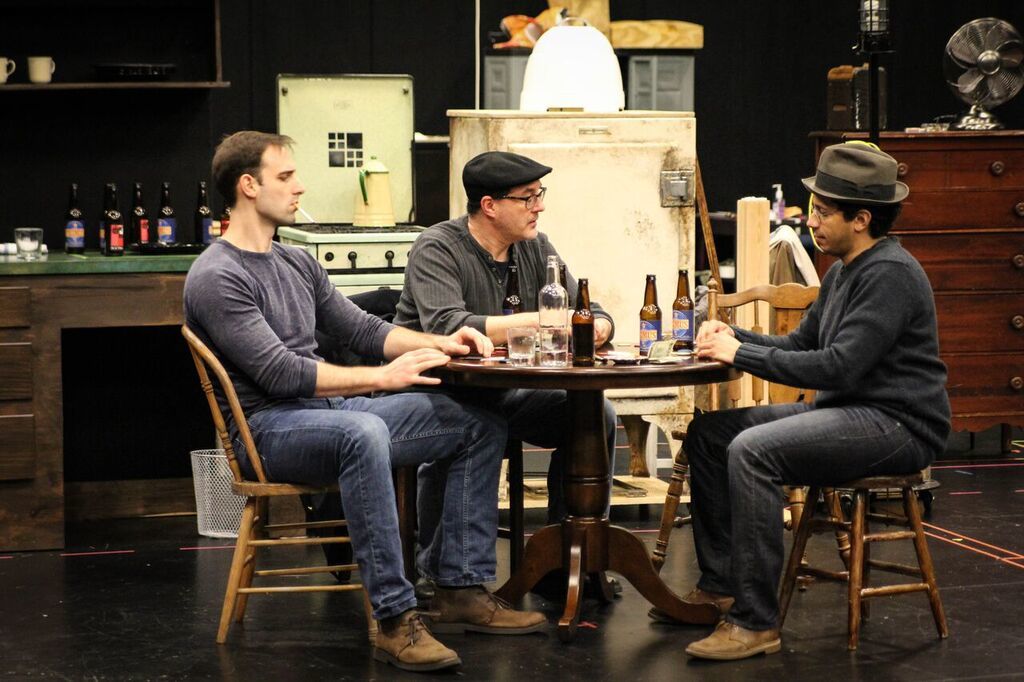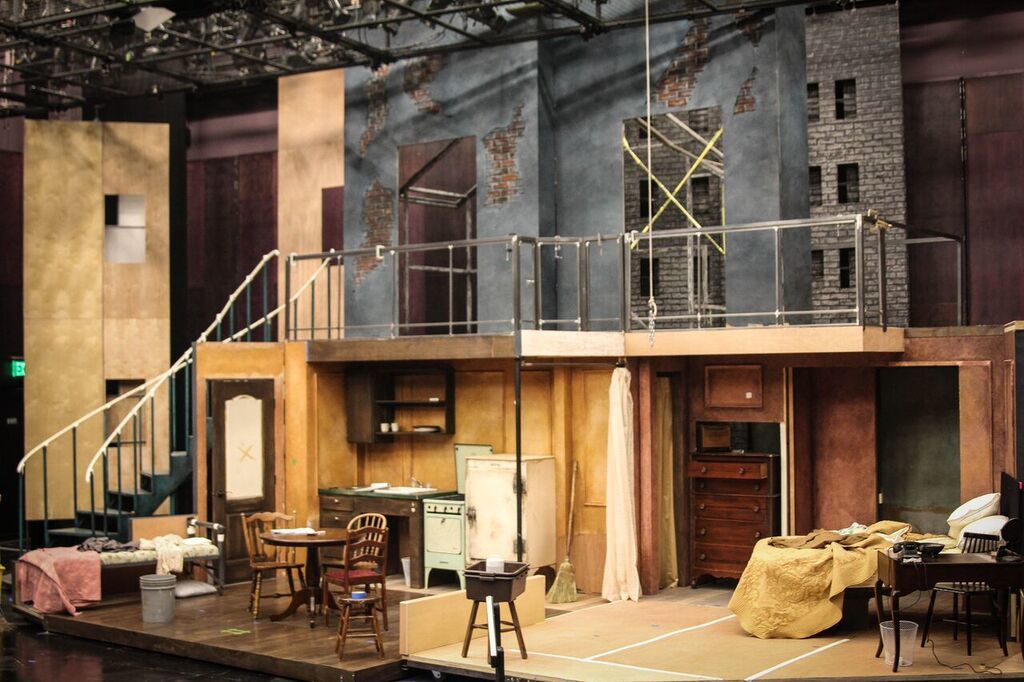

3D puzzle-like sets.
They might seem simple—both include interiors of houses with
kitchens, bedrooms, and few frills. But the logistics of changing these
sets over, sometimes with mere hours between shows, render them all the
more complicated. To make the transition as easy as possible, designers
modeled the set in 3D to ensure all of the components fit together like
pieces of a puzzle. Now, when it comes to changing out the sets,
“they’ve got it down to 45 minutes,” Lancisi says.
The cost and size.
Figure it’s cheaper to put on two plays with the same cast? Think
again. Lancisi estimates the Great American Rep cost an extra $250,000
to produce, which has basically doubled the cost of putting on two
plays. It takes a larger crew of scenic artists and light engineers,
plus the actors and set, costume, light, and sound designer are paid
larger fees because of the increased rehearsal and performance times.

The costumes and wigs.
The actors could start out with loose Southern belle curls and
working men’s shirts and jeans and end up in three-piece suits. The
costume, wig, and makeup designers have a tall order when it comes
clothing and adorning the cast. The wardrobe for this show includes 14
wigs and dozens of costumes, a daunting task for any show.
The plays’ similarities.
On the surface, the plays come from seemingly different ends of
the spectrum of the American experience. One focuses on a woman raised
in the rural American South, the other on a working-class man in the
industrialized Northeast. But at their cores, both are about themes
related to the loss of the dreams and identity, and the main characters
hover in fantasy worlds, unable to cope with reality (not to give too
much away). Willy and Blanche are so powerful that they connect strongly
with audiences, and address themes that still resonate today, says
Hylton. “You’re dealing not just with life and death, but what it means
to be human,” she says.
What the audience gains
Be prepared—these plays have been known to deliver emotional gut
punches. “Nothing’s dainty in these plays. They’re full meals,” says
Derek Goldman, the director of Streetcar.
That being said, each contains plenty of humor that will have you in
stitches, and the dialogue is such that you can’t help but wonder at its
mastery. Plus, you only have to see both plays in a day if you want to.
Everyman allows you to customize your experience—you can see them a
month, a week, or a day apart if you wish. Goldman believes you’ll leave
Everyman with a better appreciation for live theater and what it’s
capable of accomplishing. “Both plays are full of life, humor, and
tenderness. They aren’t depressing experiences,” he says. “They make you
realize how alive you are.”
Performances run April 6 through June 12. Tickets run from $10 – $60. To order: 410.752.2208 or www.everymantheatre.org
